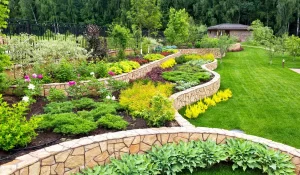How to Plan a Garden Arrangement

Color is an important design element in a garden arrangement. It provides unity and movement to a landscape. When used in combination with other elements, it can add interest and evoke emotion. Warm colors give a feeling of warmth, while cool colors make objects appear smaller. Green and purple are two examples of complementary colors. When used in conjunction with other colors, they should be spaced out by white or a bright color.
You can try placing a variety of plants and flowers in different places. Try to observe the shade from different places to decide where to place your plants. It’s also helpful to draw a map of your garden space on graph paper so you know where the sun and shade will be. You can also use garden design software to help you plan your garden.
Dutch style designs include contemporary and linear designs and make use of a variety of greens and textures. Dutch style gardens are a favorite for those who love natural beauty and are passionate about flowers. They are often complemented with stones, bark, and mosses. These styles can be quite versatile. A garden arrangement can include different colors and styles, and you can even mix them in the same bouquet to make a new look.
Modern/European style floristry is another style of garden arrangement that uses linear designs and emphasizes unique floral materials. It also uses asymmetric placement and incorporates negative space to create a unique design. Modern designs often include a mixture of different colors and play with the space between blooms. In addition, they can incorporate many exotic flowers, as well as some common flowers.
When selecting flowers for a garden arrangement, consider the size of the container. It should not be too small nor too large. Choose a container that can accommodate several plants. A garden arrangement of five to six flowers is a good size for a flower border. It will allow smaller plants to be placed in the front and taller ones behind.
When planning your garden, choose a layout that maximizes sun and air circulation. A traditional garden layout features long rows that run from north to south. This layout will maximize your garden yields and suppress weeds. If you are planning to grow corn, plant it on the north side of the garden, while medium sized vegetables like tomatoes should be planted in the center. Short crops, such as carrots, should be planted in the southern area.
Choose a garden space that receives 6 to 10 hours of sunlight a day. The soil should be well-drained and have some organic matter. Make sure you avoid planting too close to trees and shrubs, as they may compete for sunlight and water, and shade the garden area.






